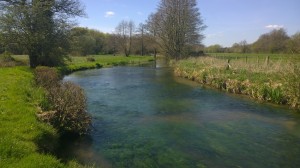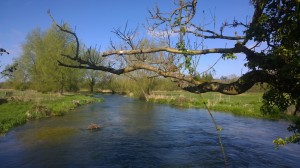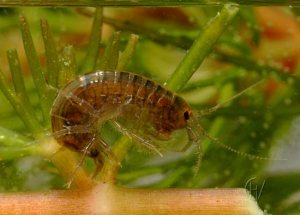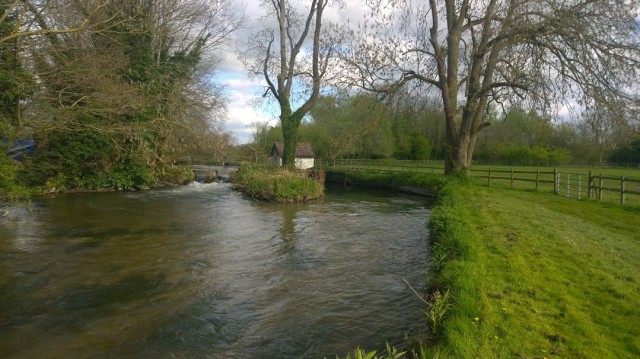Floods: Fish & fly are the winners
Nether Wallop Mill, Hampshire, England
Easter Monday 21st April 2014
The British weather just loves to confound this nation, or at least me. Two months ago I was sitting here perched like a pimple as the Wallop Brook came within inches of flooding The Mill. Today you would barely know the ‘extreme flooding event’ as the Environment Agency like to call the wettest winter in over a hundred years, ever happened. As I go around the rivers making final preparations I find myself scratching my head as there are various markers I have lodged in my memory that record the height of the rivers in previous years. Commonsense would suggest that every marker should be surpassed but, and I know this may be hard to believe, but currently the Hampshire rivers are a lower than they were this time last year and much lower than in May 2012.
A bit of me feels slightly smug as I was always confident that the rivers could open on time, though plenty of naysayers said otherwise. However, I am conscious that pride comes before a fall and that I really have nature to thank getting us in such a good place. Firstly, don’t run away with the thought that low equals bad. Far from it. The velocity of the water is terrific and the huge filled-to-the-brim chalk aquifers will keep the streams in prime condition all season. The current height is down to two factors; monthly rainfall and weed growth. Last April was record wet, as was the previous May whereas both March and April this year thus far have been dry. More significantly the ranunculus weed took a battering in the winter floods and has taken a while to recover, especially further down the river systems. On the headwaters where the
water remained fast, clear and shallow even through the worst of the floods it has grown better than ever, but further down when the depth and murkiness of the water kept sunlight off the roots the winter growth was stunted. As a result that bulk of weed growth that raises the river height and acts like a million weirs is not there for now. But don’t despair it is recovering; some sections of the river will look bare for a while but I am sure by the time we get to the June weed cut we will be cursing the volume of weed under our breath.
As I travel around everyone has their own opinions about the floods but beyond the immediate and obvious difficulties that the huge amount of water caused the two concerns that stand out are for the fly life and the spawning. The consensus is that both have and will suffer, but somehow this didn’t chime with me so I did a little research. You will not be very surprised to hear that there is nothing to be gleaned in the form of scientific reports on the topic of once-in-a-hundred-year chalkstream flooding events so that avenue proved a dead end. However, in counties with hydro dams, notably Sweden and Canada, the effects of sudden water surges are well documented and I am happy to say to those that are worried, you don’t need to. The news is good for both fish and fly.
The fish do well because the survival rate of the eggs, both salmon and trout, increases dramatically with the heavy water flows. The gravel beds are loosened by the flows allowing more eggs to become captured in the gravel and once safely lodged each ova gets more and better oxygenated water. More hatching eggs equal more fry and more fry equal more juvenile fish and so on. Expect to see a spike in the wild trout population 2-3 years from now.
The fly question looked more complicated, but actually the insects are smarter than we give them credit for by adapting very quickly as they sense the onset of the floods that
force them to find safe habitat ahead of the worst of the rains. In fact their lives to a certain extent get easier as the range of habitat is vastly increased as the water floods thousands of acres of meadows. Mayflies and sedges do well out of floods, positively thriving. As I navigate my way around the vast array of damp ditches and still full carriers of the long abandoned water meadow systems I can see how this makes perfect sense. Every day there are huge hatches of olives out in the fields and it can be no coincidence that the wildlife like the owls, water voles and field mice are having a heyday. However it is not all good news. The gammarus or freshwater shrimp are definite losers. I guess finding refuge was not easy for them and the population will take some years to recover from the winter of 2013/14.
On balance, for all the difficulties it has caused, if you like your chalkstreams to thrive a good flood once in a while looks like a good thing.





No comments:
Post a Comment